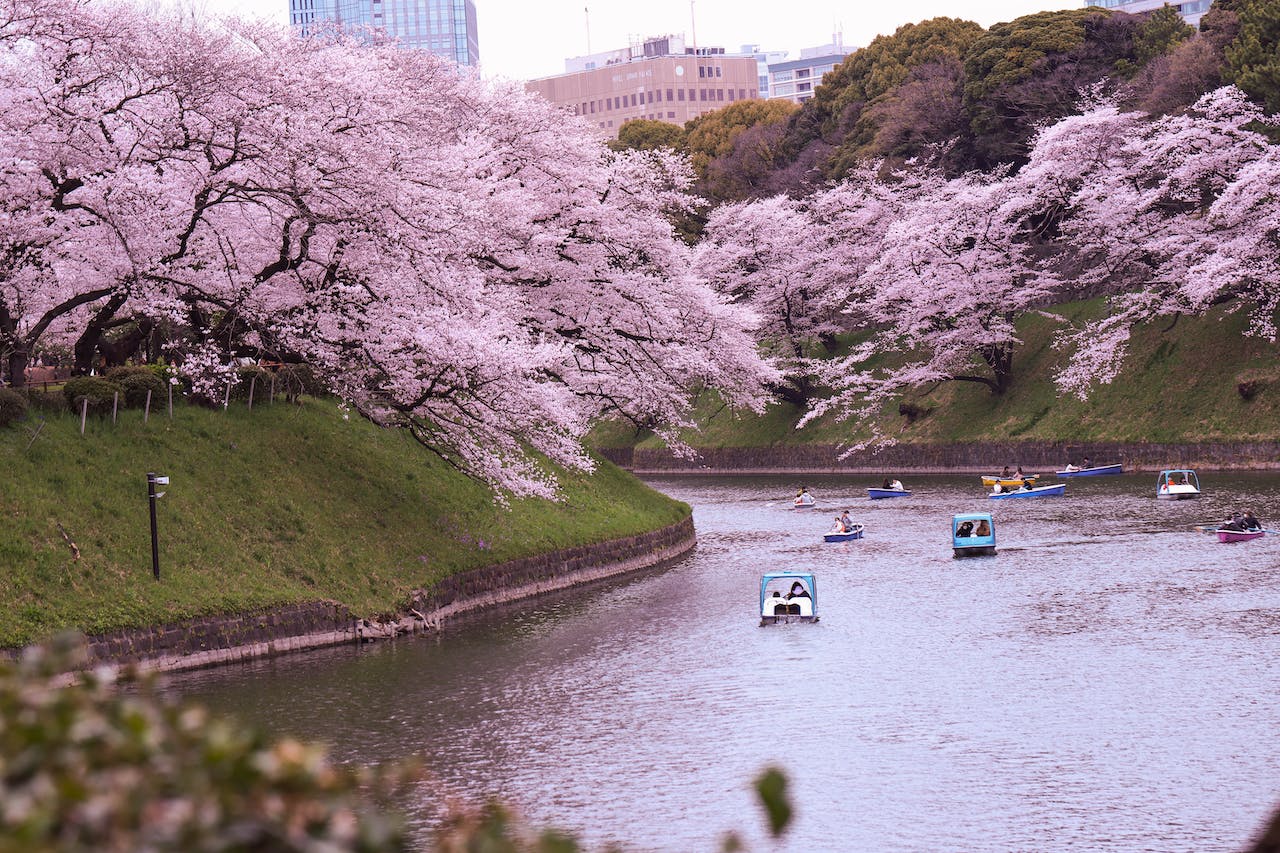Delving into China's Rich History and Culture: Must-Visit Historical Sites

China's natural landscapes are as diverse and captivating as its rich history and culture. From the grandeur of the Great Wall, which winds its way through rugged terrains and serene lakes, to the ancient marvels of Xi'an's Terracotta Army, each site offers a unique glimpse into the country's varied topography. The Forbidden City in Beijing, with its sprawling imperial grounds, contrasts sharply with the tranquil beauty of Suzhou’s Classical Gardens, where meticulously designed landscapes invite reflection and serenity. Meanwhile, Lijiang Old Town in Yunnan Province, with its well-preserved architecture and vibrant culture, adds a distinct charm to China’s mosaic of natural and historical wonders. Together, these sites provide a broad spectrum of China’s diverse landscapes, showcasing both its breathtaking natural beauty and its storied past.
China's natural landscapes are as diverse and captivating as its rich history and culture. From the majestic Great Wall of China, which stretches across rugged terrains and serene lakes, to the ancient marvels of Xi'an's Terracotta Army, each destination offers a unique glimpse into the country's varied topography and historical significance.

Source : Canva (Jade Dragon Snow Mountain in Li Jiang Yunnan, China)
The Forbidden City in Beijing features sprawling imperial grounds that contrast sharply with the tranquil beauty of Suzhou’s Classical Gardens. These meticulously designed landscapes provide an inviting space for reflection and serenity, showcasing China's exquisite landscape architecture.
In Yunnan Province, Lijiang Old Town enchants visitors with its well-preserved architecture and vibrant local culture, adding a distinct charm to China’s mosaic of natural and historical wonders. Together, these iconic sites illustrate the breathtaking beauty of China’s diverse landscapes and its storied past, making it a must-visit destination for travelers seeking both adventure and cultural enrichment.
Source : Canva (The Great Wall of China)
The Great Wall of China is an ancient wonder that stretches over 13,000 miles, built to protect China from invaders. Construction started over 2,000 years ago, and what we see today mostly comes from the Ming Dynasty (1368-1644). It wasn’t just a wall—it had watchtowers, barracks, and even signaling systems. It's a fascinating blend of history and engineering.
When visiting, there are several sections worth exploring. Badaling, close to Beijing, is the most popular and well-maintained, making it a great spot for first-timers, though it can get crowded. If you prefer a quieter experience, Mutianyu offers beautiful forest views, fewer people, and easy access via cable cars and toboggans. Huanghuacheng—known as the "Lakeside Great Wall"—is ideal for nature lovers, with parts of the wall dipping into serene waters. Also, the best time to go is in spring or autumn. It’s a good idea to get there early to avoid the busiest times. If you’d like a bit of help getting around, sections like Badaling and Mutianyu have cable cars.
Source : Canva (The forbidden city in Beijing)
The Forbidden City in Beijing, China, is a historically significant palace that served as the imperial residence for 24 emperors during the Ming and Qing dynasties, spanning over 500 years. Constructed in the 15th century, this architectural marvel covers 180 acres and features nearly 1,000 buildings designed to reflect the cosmic order of the universe. Recognized as a UNESCO World Heritage Site, the Forbidden City symbolizes the grandeur of imperial China.
Key Highlights of the Forbidden City
Visitors can explore numerous iconic features, including:
-
Hall of Supreme Harmony : The ceremonial hall where emperors held important events.
-
Imperial Garden : A beautifully landscaped area for relaxation and reflection.
-
Treasure Gallery : Showcasing an impressive collection of historical artifacts.
Open year-round, the Forbidden City attracts millions of visitors and offers guided tours, exhibitions, and stunning historical treasures. To enhance your visit, it's advisable to wear comfortable shoes, arrive early to avoid crowds, and show respect for this rich cultural heritage.
Source : Canva (Terracota army in Xi'an)
The Terracotta Army in Xi'an, China, is an extraordinary archaeological discovery that dates back to the late 3rd century BCE. Unearthed in 1974 by local farmers, this massive collection of life-sized clay soldiers, chariots, and horses was buried near the tomb of Qin Shi Huang, China’s first emperor. These remarkable figures were created to accompany the emperor in the afterlife, symbolizing his immense power and military strength.
Must-See Areas of the Terracotta Army
When visiting the Terracotta Army, be sure to explore these key areas:
Pit 1: The largest and most impressive pit, featuring over 6,000 soldiers arranged in battle formation. This pit offers a grand view of the army’s scale and organization, making it a highlight of your visit.
Pit 2: Showcasing a mix of chariots, cavalry horses, and infantry soldiers, Pit 2 provides insight into the diverse components of the army, illustrating the complexity of ancient military strategy.
Pit 3: The smallest of the three main pits, believed to be the command center, features higher-ranking officers and several chariots, offering a glimpse into the leadership structure of Qin Shi Huang's forces.
Visiting the Terracotta Army
A visit to the Terracotta Army is a must for history enthusiasts and travelers alike. This UNESCO World Heritage Site provides a fascinating look into ancient Chinese civilization and the legacy of its first emperor.
When visiting the Terracotta Army, there are a few key areas you won’t want to miss. Pit 1 is the largest and most impressive, featuring over 6,000 soldiers arranged in battle formation. It offers a grand view of the army’s scale and organization. Pit 2 showcases a mix of chariots, cavalry horses, and infantry soldiers, giving insight into the diverse components of the army. Pit 3, the smallest of the three main pits, is believed to be the command center, featuring higher-ranking officers and a few chariots.
Source : Canva (Suzhou classical garden)
Suzhou's Classical Gardens are a breathtaking showcase of traditional Chinese landscape design. These gardens are not only visually stunning but also hold great historical significance. Recognized as UNESCO World Heritage Sites since 1997, they represent the pinnacle of Chinese garden artistry. With intricate rock formations, flowing water, lush vegetation, and elegant pavilions, these gardens embody the Chinese philosophy of harmony between humanity and nature.
Must-See Classical Gardens in Suzhou
When visiting Suzhou, be sure to explore these iconic gardens:
Humble Administrator’s Garden : The largest and most famous garden, known for its elegant water features and tranquil atmosphere. It offers a serene escape and showcases the beauty of traditional Chinese garden design.
Lingering Garden : Celebrated for its balanced design and classic rock formations, this garden exemplifies the principles of harmony and aesthetics in Chinese landscaping.
Master of the Nets Garden : Although smaller, this garden expertly utilizes space and water, providing a perfect example of innovative garden design principles.
Classic Garden of the Scholars : Highlights traditional Chinese architecture combined with delicate landscaping, making it an essential stop for anyone interested in cultural heritage.
Visiting Suzhou's Classical Gardens
A visit to Suzhou's Classical Gardens is a must for anyone interested in Chinese history, culture, and art. These gardens offer a unique glimpse into the harmonious relationship between nature and human creativity, making them some of the most cherished attractions in China.
Source : Canva (Li Jiang Old Town, Yunnan, China)
Lijiang Old Town in Yunnan Province, China, is a captivating blend of history and culture. This UNESCO World Heritage Site is renowned for its unique Naxi architecture, featuring narrow, winding streets and charming wooden buildings. Visitors will be enchanted by beautifully preserved courtyards, picturesque stone bridges, and the scenic Black Dragon Pool, all set against the stunning backdrop of Jade Dragon Snow Mountain.
Rich Cultural Heritage
Lijiang Old Town is deeply rooted in the cultural heritage of the Naxi ethnic group. Recognized for its well-maintained ancient layout, the town offers a vibrant glimpse into Naxi culture. Visitors can explore unique customs, including distinctive Naxi music and lively festivals, while also learning about Dongba culture and its unique script.
Culinary Delights
The local cuisine is another highlight of Lijiang Old Town, featuring delicious dishes that showcase regional specialties such as yak meat, fresh mushrooms, and traditional teas. Food enthusiasts will find plenty of opportunities to savor the authentic flavors of Yunnan.
Why Visit Lijiang Old Town?
A visit to Lijiang Old Town is essential for anyone interested in Chinese history, culture, and architecture. With its rich heritage, stunning scenery, and delicious cuisine, Lijiang Old Town offers a unique travel experience that shouldn't be missed.
Conclusion
China is a treasure trove of incredible history and culture. The Great Wall stretches impressively across the landscape, and the Huanghuacheng section, with its serene lakeside views, is perfect for nature lovers. The Forbidden City in Beijing showcases the grandeur of China’s imperial past, having served as a royal residence for centuries. The Terracotta Army in Xi’an is a remarkable archaeological find, featuring thousands of lifelike soldiers from ancient times. Suzhou’s Classical Gardens are not only beautiful but also rich in tradition, reflecting classic Chinese design. Finally, Lijiang Old Town in Yunnan is a charming blend of history and culture, celebrated for its well-preserved streets and vibrant Naxi heritage. Each of these sites offers a unique glimpse into China’s fascinating history and enduring beauty.
Disclaimer
The information provided highlights notable historical and cultural sites in China and is intended for general informational purposes. While every effort has been made to ensure accuracy, the descriptions and details may not reflect the most current conditions or developments. Readers are encouraged to conduct their own research and verify information before making travel plans or decisions.
















